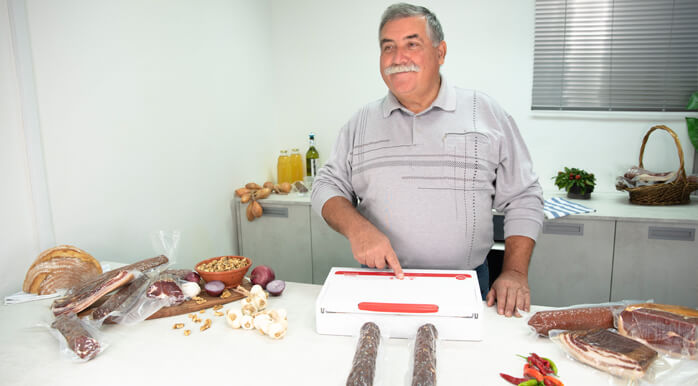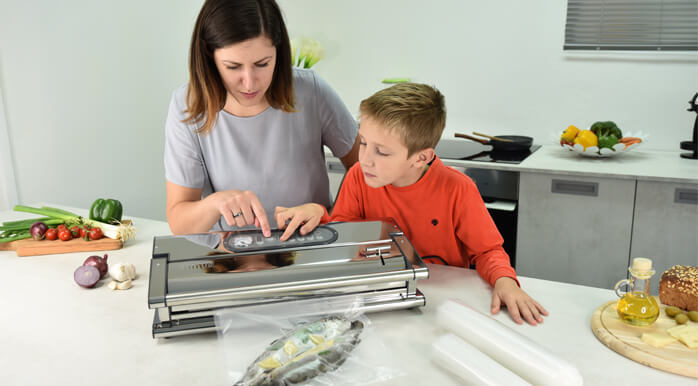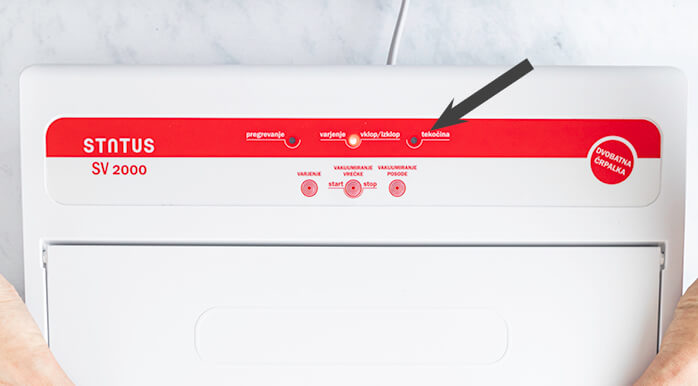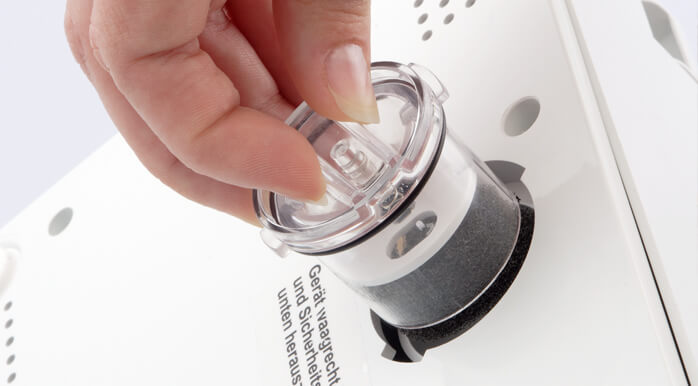Which vacuum sealer to buy? Part I.
Are you contemplating buying a vacuum sealer, but you are confused by all the information from the distributors: rated power, vacuum pressure, pump volume etc.? In the blog post below we describe each term and its effects on the process of vacuum packing in detail.
Vacuum pressure (- mbar)
Vacuum pressure is measured in negative mili bars. This information lets you know the maximum vacuum pressure (vacuum) that can be achieved in the food vacuum bag by this vacuum sealer. The bigger the vacuum pressure, more air (oxygen) is removed. That means less possibility for the microorganisms to develop.
The pump
The pump can be membrane or piston (single- or double-piston). A vacuum sealer can also have two pumps. The type and the number of pumps affect the speed at which the air is removed from the bag or the container. Double pump removes the air faster than single, even one time faster. This means you will will vacuum pack the food faster. This is especially important when vacuum sealing bigger batches of food.

Pump volume (L/min)
Pump volume is measured in litres per minute and it marks the volume of air that is pumped per minute. This information is mainly linked to the type and the size of the pump, max. RPM and appliance rated power. The bigger the pump volume the faster the air is pumped from the bag or the container.
Appliance rated power (W)
Appliance rated power is measured in watts and it tells you how much electricity it needs to work. For the end user this usually means that the machine is stronger, but it also means it uses more energy. That is why it is important to find an optimal ratio between the rated power and other functions of the vacuum sealer.
Manual and automatic vacuum packing function
Manual and automatic functions enable you to store all kinds of foodstuffs – from dried meat products to delicate baked goods and juicy fruits. The meaning of these functions is simply explained by comparing dry and fresh meat. Dry meat is firm and it doesn’t contain moisture, so you can vacuum seal it at a press of a button – automatic function. In this case the machine removes the air until it reaches the maximum vacuum pressure with its integrated pump and it finishes the process by automatically sealing the bag.
On the other side there is fresh meat which contains a lot of liquid. If you were to vacuum pack it with an automatic function with a machine without a liquid trap, the vacuum sealer would absorb the liquid and malfunction.
It is strongly recommended to use manual or advanced pulse vacuum packing function for packing fresh meat, juicy fruits, (blanched) vegetables, and baked goods. Some manufacturers also call it soft or delicate vacuum packing function.
Manual function is simple and it simply means you stop the pump by pressing the button when you deem enough air has been removed or when the liquid in the bag comes close to the machine. The vacuum sealer will also automatically seal the bag at the end.

Liquid sensor
The sensor stops the pump when it detects liquid in the pumped air and by that it prevents the liquid from getting into the machine. Special indicator will warn you when/ if that happens. The solution is simple – you just need to clean and dry the special container in the vacuum channel.
Despite the sensor, we recommend the use of manual vacuum packing function when vacuum packing moist foods, because it enables you to stop the pump at any given moment.

Liquid trap for excess liquid
Container for excess liquid is a bit simpler protection from absorbing liquid during vacuum packing. Usually it is in a form of a little container that gathers droplets of liquid. In the case of larger amounts of liquid the pump and pressure switch get damaged – at the beginning the machine will not switch to automatic welding and at the end it will not even vacuum air.



